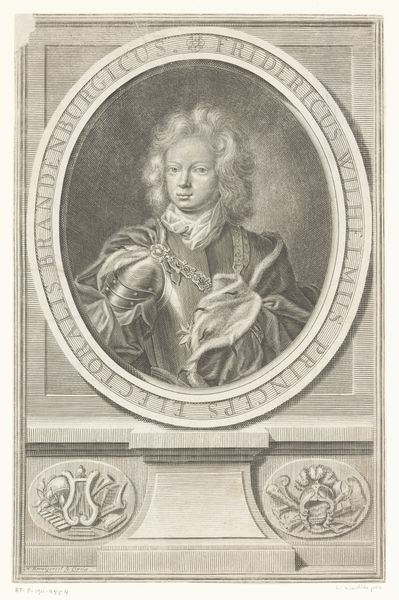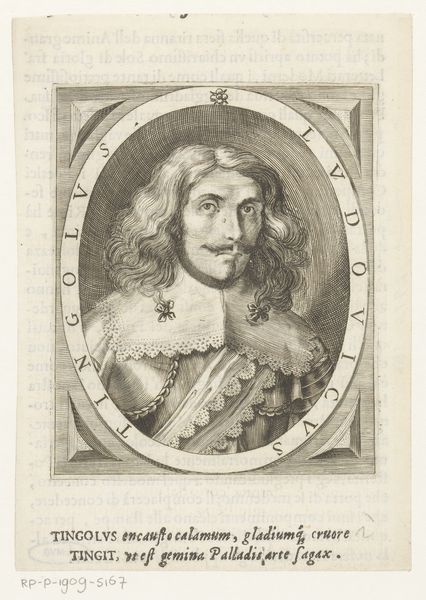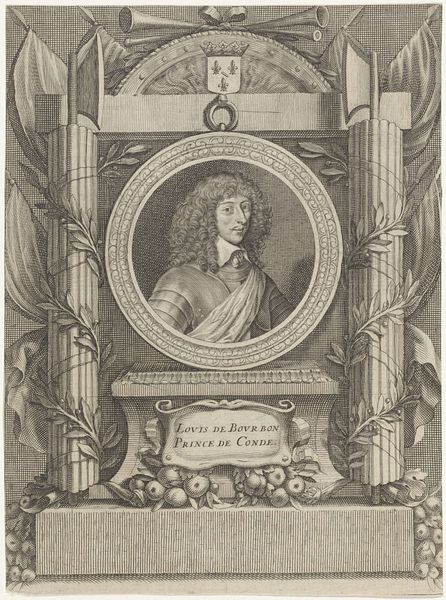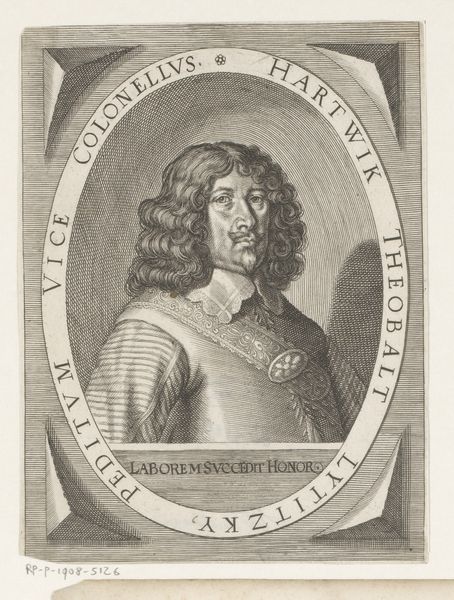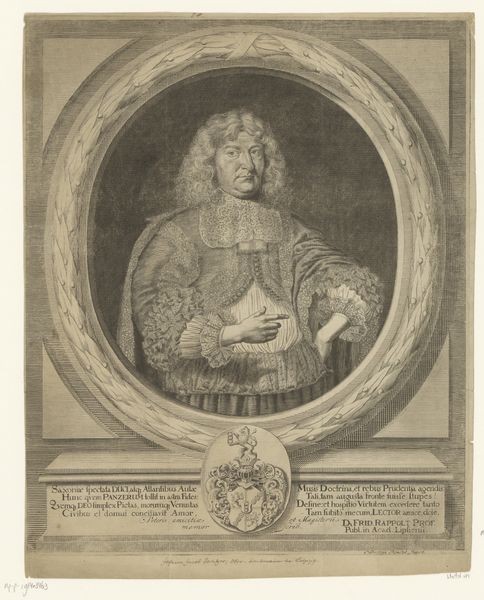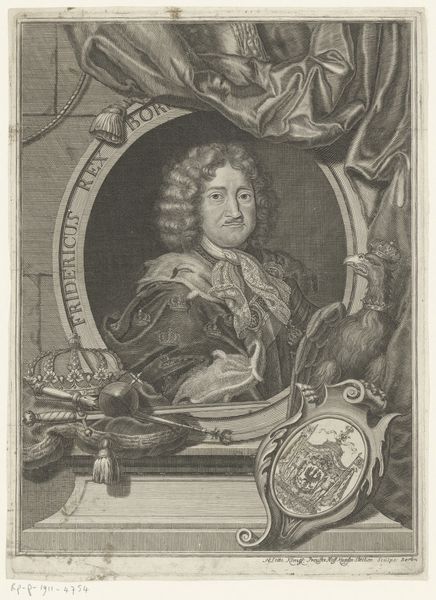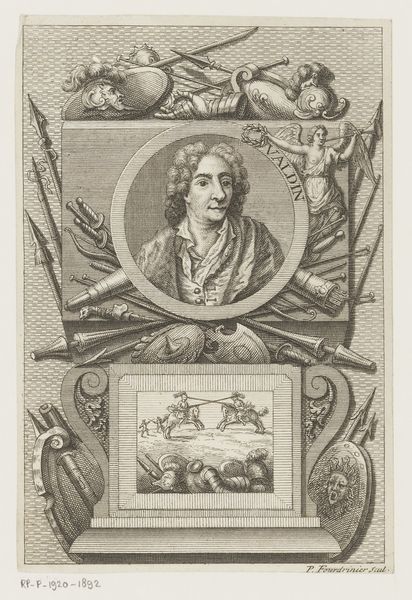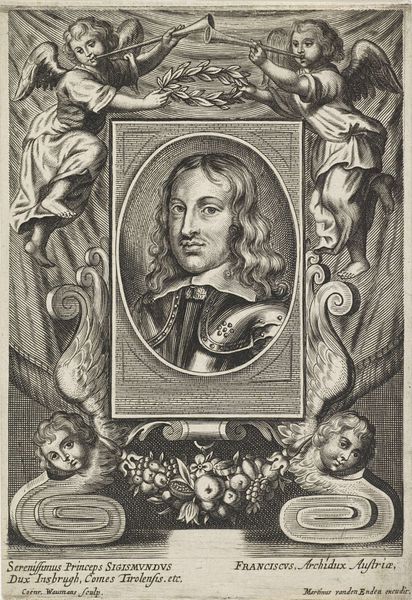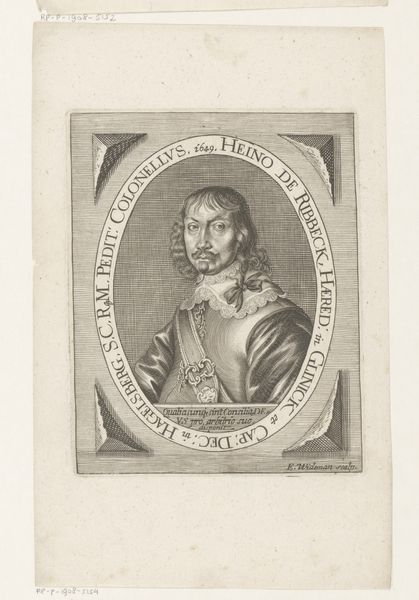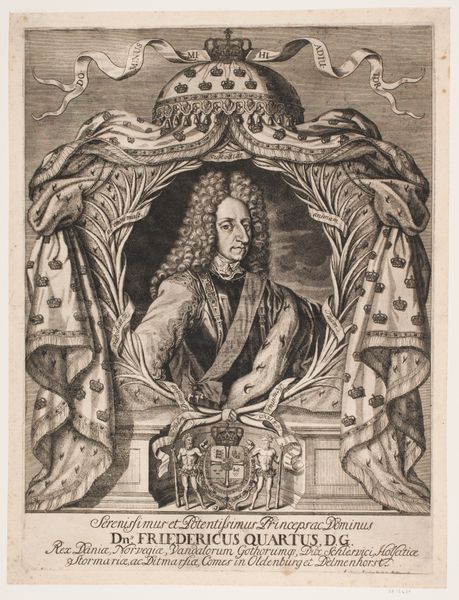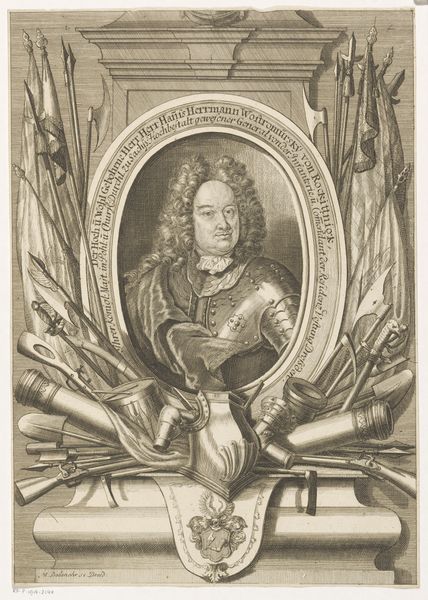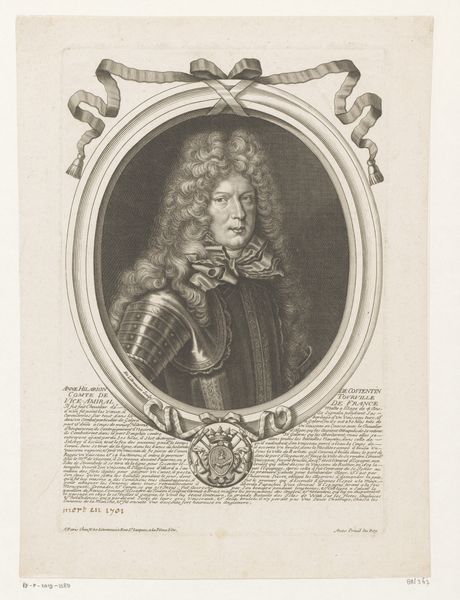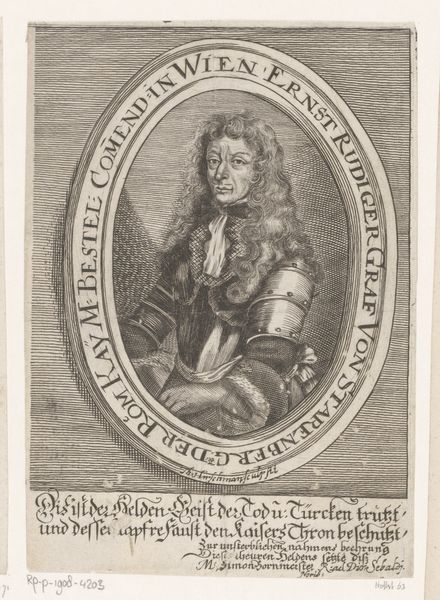
print, engraving
#
portrait
#
baroque
# print
#
portrait drawing
#
history-painting
#
engraving
Dimensions: height 212 mm, width 154 mm
Copyright: Rijks Museum: Open Domain
Editor: This engraving, "Portret van geschiedschrijver Bernardo Giustiniani," dates from 1654 to 1734 and is by Isabella Piccini. The details in the face are incredible! The entire image feels formal, almost like a coin or medal. What’s your interpretation of this work? Curator: From a historical perspective, these kinds of portrait prints were crucial for disseminating knowledge and establishing status in the early modern period. The image functions not only as a likeness, but as a statement about Giustiniani's place in Venetian society. Editor: You mean like propaganda? Curator: Not exactly in the modern sense, but certainly a curated presentation of his identity. The circular frame mimics a classical coin, associating him with the prestige of antiquity. And notice the heraldic symbols and inscriptions. They connect him to powerful family lineages and virtues. Who was he writing for, and what was his message? Those things connect deeply. Editor: Ah, so it’s all very deliberate: the symbols, the profile view... it's all carefully constructing his public image. I guess engravings like this had a very specific function within the historical and social context of the time. Curator: Precisely! It reminds us that even portraits, which appear objective, are deeply embedded in the politics of representation. These visual choices shape his lasting reputation and tell us as much about his world as it does about him, no? Editor: That’s true. I didn't consider how deeply linked these portrait prints were to status and social structure. Now I understand this piece much better, recognizing how it's crafted to tell a very specific story about him. Curator: Indeed! It highlights the potent role images play in history and the construction of historical narrative.
Comments
No comments
Be the first to comment and join the conversation on the ultimate creative platform.
